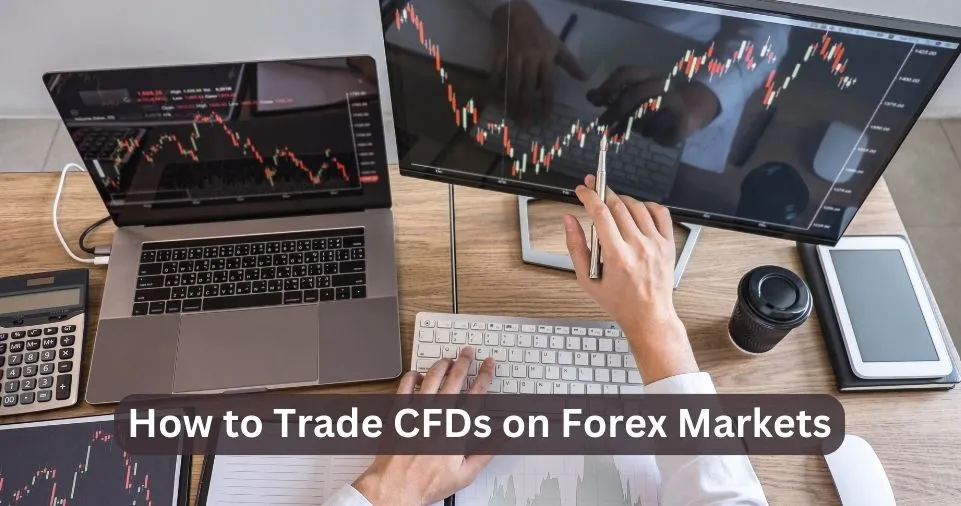Trading foreign exchange (forex) can be daunting, especially if you’re unfamiliar with the tools used by traders. One of the most popular instruments for trading forex is Contracts for Difference (CFDs).
Today, at BusinessNewsTips, we will walk you through everything you need to know about CFD forex trading, breaking down complex concepts into simple, digestible explanations. You’ll learn what forex CFDs are, how they work, and the best strategies to get started.
What Are Forex CFDs?
Forex CFDs allow you to trade currency pairs without owning the actual currencies. Instead, you’re speculating on the price movements of these pairs. The contract represents the price difference between your entry and exit points in the trade. This flexibility enables traders to profit from both rising and falling markets.
Example: Let’s say you believe the euro (EUR) will appreciate against the U.S. dollar (USD). You can open a CFD position on the EUR/USD currency pair. If the euro strengthens, you profit. Conversely, if the euro weakens, you face a loss.
Key Advantages of Forex CFDs
- Leverage: CFDs are traded with leverage, meaning you only need to deposit a small percentage of the trade’s total value (called the margin). Leverage allows you to control a large position with a relatively small amount of capital.
- Two-way trading: You can go long (buy) if you expect the price to rise, or go short (sell) if you expect the price to fall.
- No ownership of assets: You don’t physically own the currency but trade on its price movement, offering flexibility in various market conditions.
How Forex CFDs Work
To trade forex CFDs, you enter a contract with a broker. The contract’s value depends on the difference between the entry and exit prices. If the currency pair moves in your favor, you make a profit. If it moves against you, you incur a loss. Here’s a simple breakdown:
- Entering a trade: You predict whether a currency will rise or fall against another. For example, if you believe the EUR/USD pair will rise, you enter a long CFD position. If correct, you profit from the difference when you close the trade.
- Margin: Instead of paying the full price of the trade upfront, you only pay a fraction of the total trade value (the margin). Leverage amplifies both gains and losses, so it’s essential to manage risks effectively.
- Profit/Loss calculation: Your profit or loss is the difference between the opening and closing prices, multiplied by the size of your trade.
Example: Trading the EUR/USD Pair
If the EUR/USD pair is trading at 1.2000, you decide to open a long position with 10,000 units (micro lot). The margin requirement is 2%. Therefore, you only need to deposit $240 to control a $12,000 position.
If the pair moves to 1.2100, you earn $100 (because each pip is worth $1 for a micro lot). However, if it drops to 1.1900, you lose $100.
ALSO READ: How to Choose the Right Financial Advisor for Your Needs
The Essentials of Forex CFD Trading
Before you dive into CFD forex trading, it’s crucial to understand the basics and risks involved.
The Difference Between Forex and Forex CFDs
Forex trading involves buying and selling currencies directly. In contrast, forex CFDs are derivative products that allow you to speculate on price movements without owning the actual currencies. Both offer ways to trade currencies, but CFDs offer additional flexibility due to leverage.
Forex is Traded in Pairs
Currencies are always traded in pairs. The first currency in the pair is the base currency, and the second is the quote currency. The price shows how much of the quote currency is needed to buy one unit of the base currency.
For instance, in EUR/USD, EUR is the base currency, and USD is the quote currency. If the EUR/USD rate is 1.2500, it costs 1.25 USD to buy 1 EUR.
Currency Lots in Forex CFDs
In forex trading, positions are measured in lots. A standard lot equals 100,000 units of the base currency, while smaller units, such as mini (10,000 units) and micro lots (1,000 units), are also available. This allows traders of all levels to engage in the market.
Trading Forex CFDs: Step-by-Step Guide
Open and Fund Your CFD Trading Account
To start trading forex CFDs, you first need to open a trading account with a broker. Here’s how:
- Fill out an application: Most brokers will require you to provide some basic personal information and details about your trading experience.
- Verify your identity: You’ll typically need to upload a photo ID and proof of residence to complete the registration process.
- Fund your account: Once your account is approved, you can deposit funds. Many brokers offer various payment methods like bank transfers, credit cards, or e-wallets.
Choose a Currency Pair
With over 80 currency pairs available to trade, choosing the right one is crucial. Currency pairs fall into three categories:
- Major pairs: These include the most commonly traded currencies like EUR/USD and GBP/USD.
- Minor pairs: Pairs that don’t involve the U.S. dollar, such as EUR/GBP or GBP/CAD.
- Exotic pairs: Pairs involving a major currency and one from a smaller or emerging economy, such as EUR/MXN (euro and Mexican peso).
Perform Fundamental and Technical Analysis
Before making any trade, it’s vital to analyze the currency pair. Fundamental analysis involves studying economic data, interest rates, and geopolitical events that can influence currency prices. Technical analysis, on the other hand, focuses on price charts and indicators to predict future movements.
- Fundamental analysis: Monitor news events, central bank policies, and economic reports like GDP, inflation, and employment data.
- Technical analysis: Use tools like moving averages, trend lines, and oscillators to find potential entry and exit points.
Decide on Spot or Option Trading
You can trade forex CFDs either on the spot market or through options:
- Spot trading: You trade based on the current price of a currency pair in real-time.
- Option trading: This gives you the right, but not the obligation, to buy or sell a currency pair at a specified price before a certain date.
Each approach has its benefits. Spot trading is immediate and often more accessible to beginners. Options trading provides flexibility and allows traders to hedge or speculate on future price movements with limited risk.
Monitor Your Position
Once your trade is live, it’s essential to keep track of its performance. Use the following tools to stay informed:
- Trading platform updates: Your broker’s platform will display your open positions and their current value.
- News alerts: Set up notifications for major economic events that could impact currency prices.
- Price alerts: Some platforms allow you to set price targets, sending notifications when a currency pair reaches a specific level.
Risk Management in Forex CFD Trading
While forex CFD trading offers potential for high profits, the risks are equally significant. Leverage can amplify losses, and volatile currency movements can lead to rapid losses.
Use Stop-Loss Orders
A stop-loss order automatically closes your position when the market reaches a certain price, preventing further losses. Setting a stop-loss is essential for managing your risk, especially in highly volatile markets like forex.
Apply Position Sizing
Don’t risk too much of your account balance on a single trade. A common rule is to risk no more than 1-2% of your capital on any trade.
For example, if your trading account holds $10,000, you shouldn’t risk more than $200 on a single trade.
Use Take-Profit Orders
A take-profit order is the opposite of a stop-loss. It automatically closes your position when it reaches a specified profit level. This ensures you lock in gains without having to monitor the market constantly.
Regularly Review Your Strategy
Successful forex CFD traders frequently assess their trading strategies to ensure they remain effective. Adjust your approach based on your performance and evolving market conditions. This can help improve your decision-making process over time.
Common Forex CFD Trading Strategies
Several strategies are available for forex CFD trading, depending on your trading style and risk tolerance. Below are some common approaches:
Scalping
Scalping involves making multiple trades in a single day, taking advantage of small price movements. Traders using this strategy usually aim to hold positions for just a few minutes, making it a fast-paced and high-pressure strategy. The goal is to accumulate small profits that add up over time.
Day Trading
Day trading is similar to scalping but with longer trade durations. You open and close positions within the same day, avoiding overnight risks. This strategy is popular among those who want to benefit from short-term price fluctuations without the stress of holding positions for multiple days.
Swing Trading
Swing traders aim to capitalize on price swings that occur over days or even weeks. This strategy requires patience and the ability to analyze longer-term price charts. Swing traders often rely on technical indicators like moving averages and oscillators to identify trends.
Trend Following
Trend-following traders aim to ride the momentum of a market in a particular direction. They identify the prevailing trend (upward or downward) and open positions in the same direction. This strategy works best in trending markets and requires discipline to stay in trades for extended periods.
ALSO READ: How to Accept Cryptocurrency Payments as a Business
Conclusion
CFD forex trading offers flexibility, leverage, and the ability to profit from both rising and falling markets.
However, with these opportunities come risks. By understanding how CFDs work, practicing risk management, and choosing the right strategy, you can trade forex CFDs effectively.
Whether you are a beginner or a seasoned trader, the key to success lies in ongoing education and disciplined trading.
FAQs
Q: Is there a difference between forex CFDs and currency CFDs?
A: No, there is no difference. The term “currency CFDs” is just another way of referring to forex CFDs.
Q: What are the best forex CFD trading strategies?
A: The best strategy depends on your risk tolerance and trading style. Scalping, day trading, swing trading, and trend following are some of the most popular strategies. It’s essential to backtest any strategy before applying it to live markets.
Q: What’s the difference between forex CFDs, spot, and options?
A: CFDs are a product used to trade forex, allowing you to speculate on currency prices. Spot trading involves trading the actual currency pair in real-time. Options provide the right, but not the obligation, to buy or sell a currency pair by a future date.







